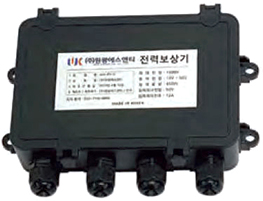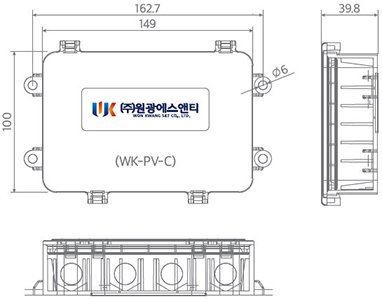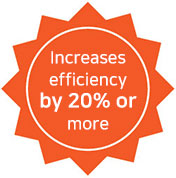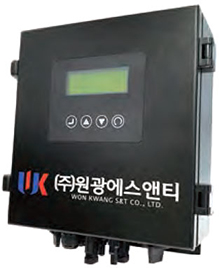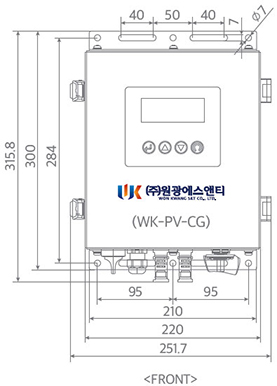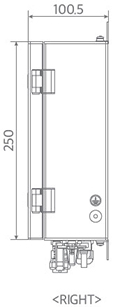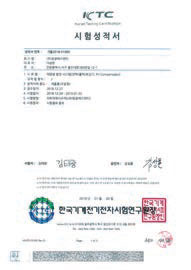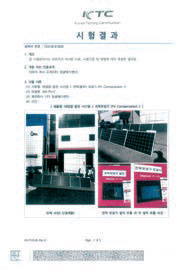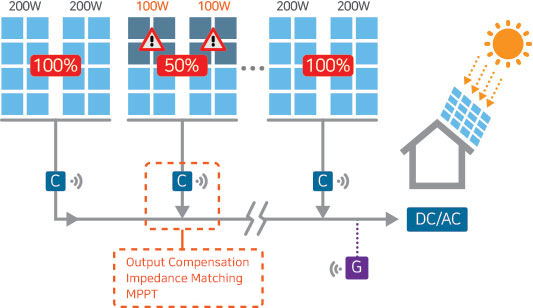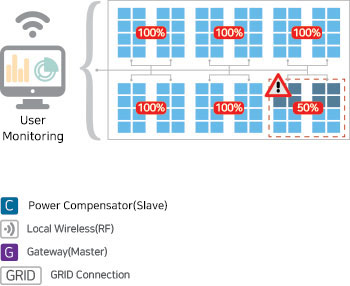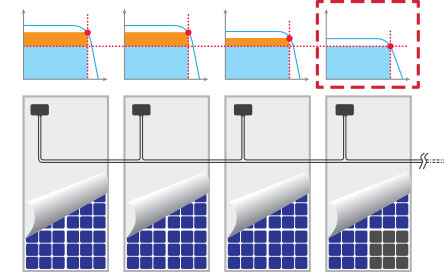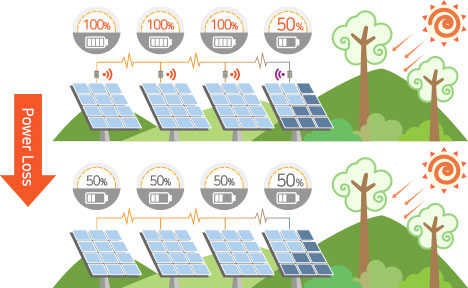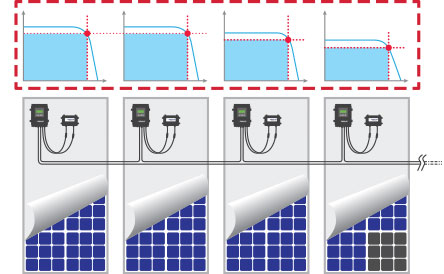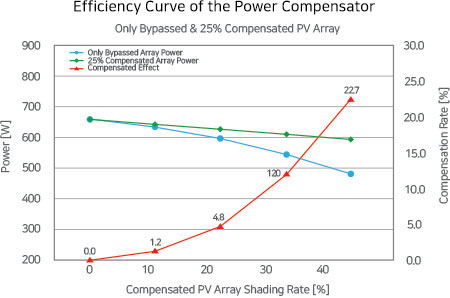■ PV Power Compensator System
Solar power generation devices, including output compensation systems, to increase the maximum efficiency of solar power generation
Power compensator: Acquired Excellent Product Certificate, K-mark, and Q-mark

- - A device that compensates for the reduction of output efficiency due to the occurrence of shade from various causes in solar power plants.
- - Significantly improves power generation efficiency by 20% or more over the period of operation of the solar power system (more than 20 years)
Gateway: Acquired Excellent Product Certificate, K-mark, and Q-mark

KTC Test Report
| Test Item |
Unit |
Test Result |
Test Method |
| Power Compensator Installed |
Power Compensator Not Installed |
| Inverter Output |
6 Modules |
1Day |
kW |
23.09 |
22.78 |
Client-suggeted method [WonKwang S&T Co., Ltd.] |
| 2Days |
21.03 |
25.07 |
| 3Days |
27.94 |
25.21 |
| 4Days |
32.13 |
28.58 |
| 5Days |
27.77 |
30.00 |
| 6 Modules (1 module is covered) |
1Day |
kW |
19.02 |
13.84 |
| 2Days |
20.07 |
15.56 |
| 3Days |
24.83 |
16.51 |
| 4Days |
28.84 |
18.45 |
| 5Days |
24.87 |
20.11 |
- 1. Test location: In the factory of Wonkwang S&T Co., Ltd.,Test time: Measured Measurement rusult from 10:00 a.m. to 02:00 p.m.
- 2. The inverter output value means the accumulated output value during the measurement period.
Introduction of a Solar Power Compensation System

The biggest problem with the existing photovoltaic device is the low amount of power generated in the shaded section.
In order to solve the problem, the system maximizes solar power generation efficiency by synchronizing the module installed in the saded section with the maximum comparison output module connected to it through performance of impedance matching according to the micom control signal.
- Innovation in Photovoltaic Systems (WonKwang S&T's Patented Technology applied) -
| Power Compensator |
·Definition and Functions
+ Definition: Photovoltaic efficiency maximization system
+ Functions
- - This is a technology that compensates for the loss of photovoltaic power generation caused by shadows, snow, contamination, etc., and it can increase power generation efficiency by at least 10 to 20% compared to existing facilities. [Authorized testing agency test data]
- - It shows excellent compatibility because it can be applied not only to newly installed photovoltaic devices but also to existing photovoltaic devices.
|
Wonkwang S&T’s Technology and Differentiation
Problems with Existing Photovoltaic Systems
Existing solar cell modules are affected by other solar cell modules with the lowest output (shadow section, etc.) due to the structural characteristics of direct and parallel connections, so there are limitations in leading the best efficiency of photovoltaic systems.
In other words, the exisiting systems are designed to be matched to the module with the lowest power generation among the solar cell modules connedted in direct and parallel, so the entire efficiency is reduced.
This is also a very serious problem in terms of operation and management of the photovoltaic system.
※ Power loss occurs because the output of each module does not match, and power genration is lost up to 20% because it is impossible to monitor the low power phenomenon of the shaded module.
Differentation & Optimization Point of Wonkwang S&T’s Photovoltaic System
Thanks to the Buck boost of the power compensator, the power control of the converter and the MPPT tracking effect, our photovoltaic system also synchronizes the module output value of the shaded part with the highest output value of the neighboring module, so that the amount of power generated by each connected module reaches the highest point.
There for, it is an optimal system with significant increase in power generation efficiency compared to exising systems.
※ Secured maximum power by synchronizing MPPT output by module
※ Problems of individual modules do not affect strings
- - Increased efficiency by about 15~20% compared to the existing photovoltaic system (Results of authorized agency testing)
- - It is possible to monitor individual solar module
- - Measurement of normal operation, lifespan, etc.
- - Reduction of installation conditions by using power reduction prevention technology for shaded areas
- - This is a technology for compensating for the consumption of power generation in the shaded section, which is a factor inhibiting photovoltaic generation, through the fusion of new renewable energy fields and ICT technology. We deveop a power conpensation device that can improve power generation efficiency

